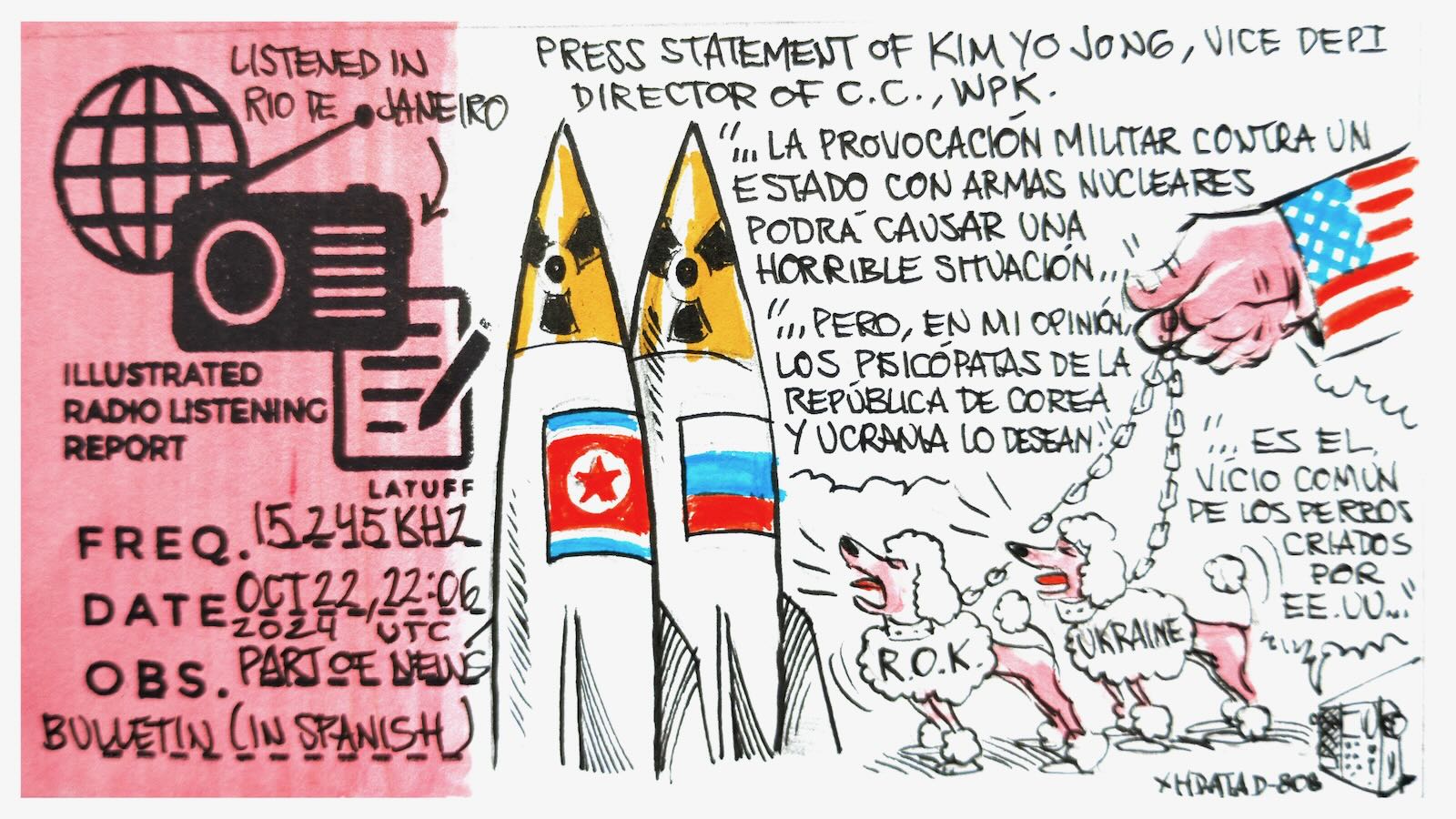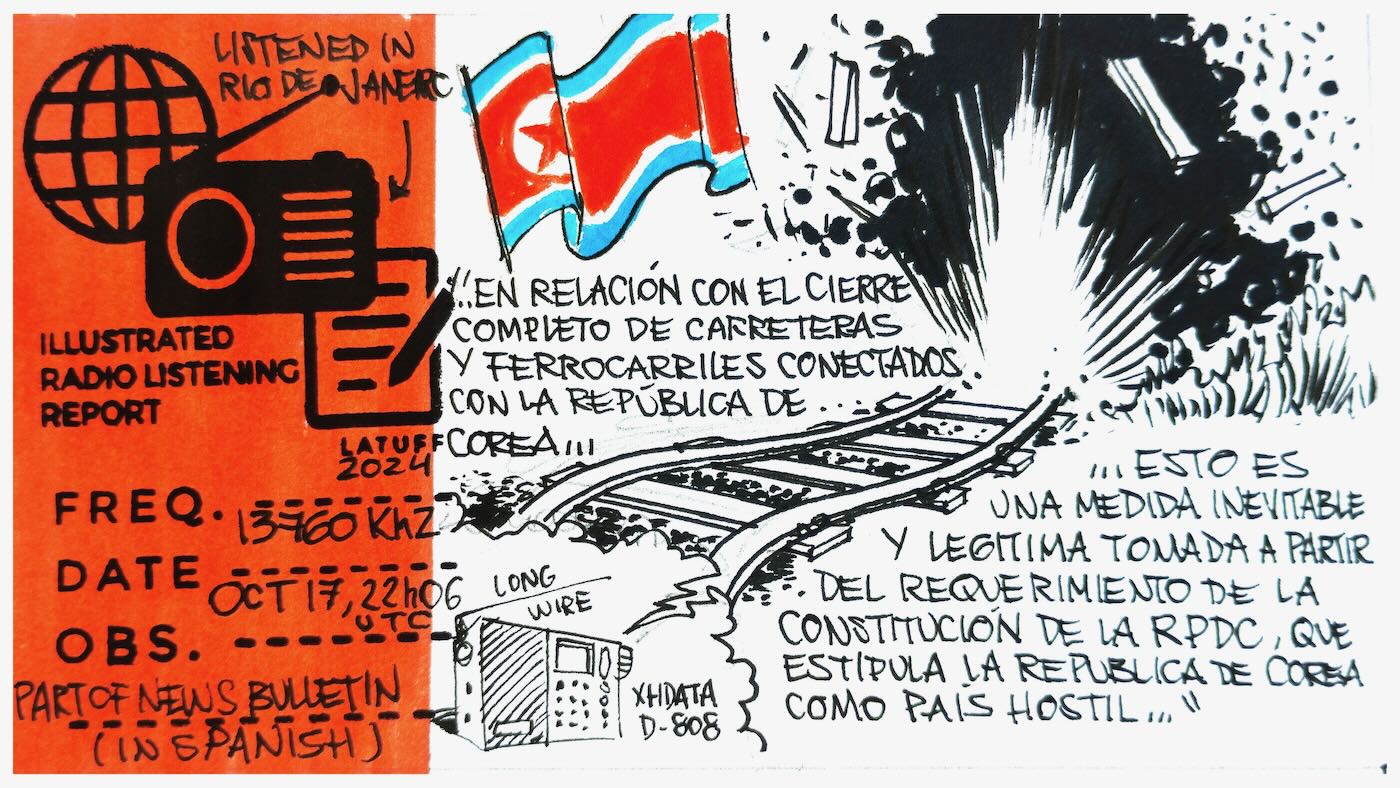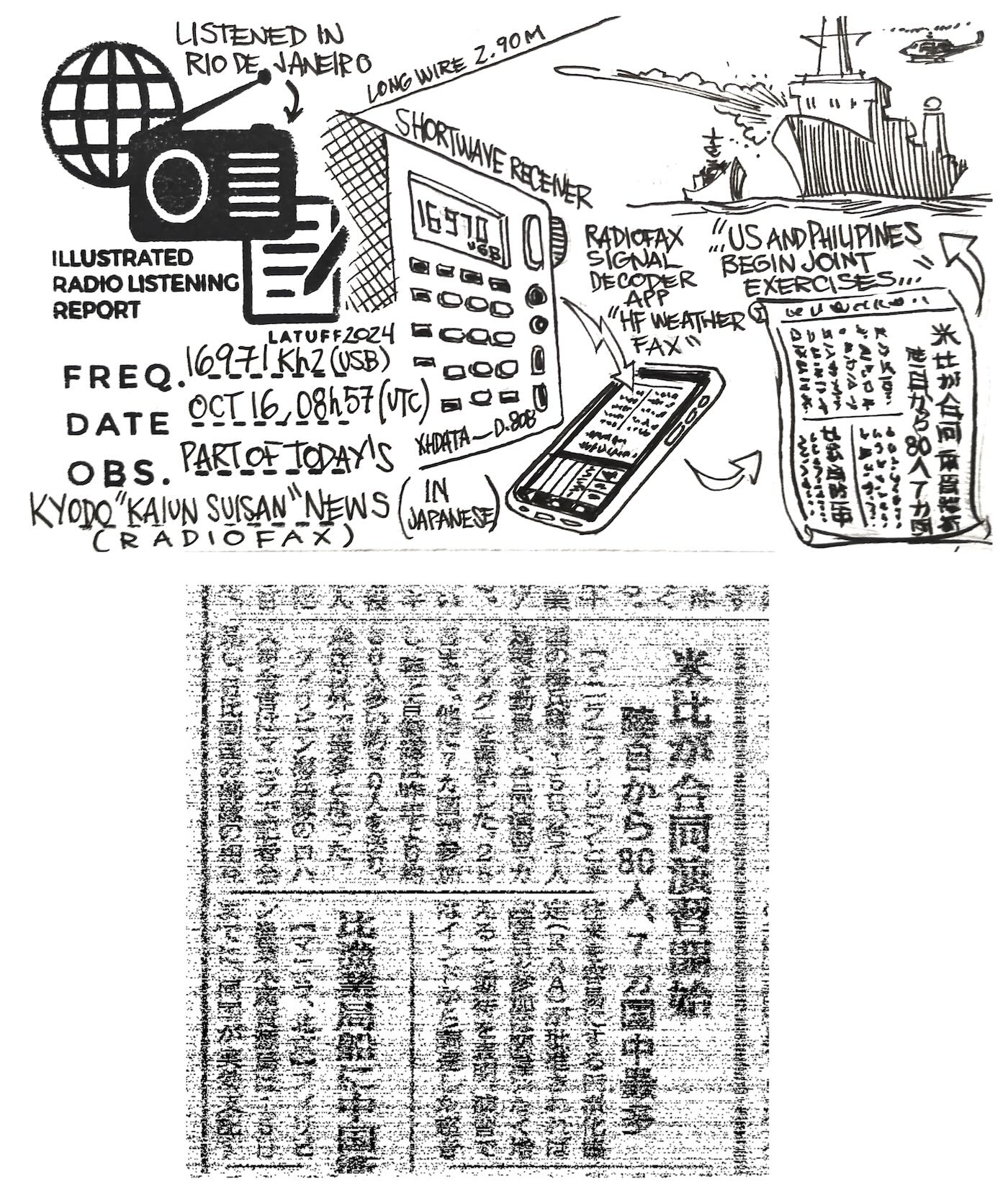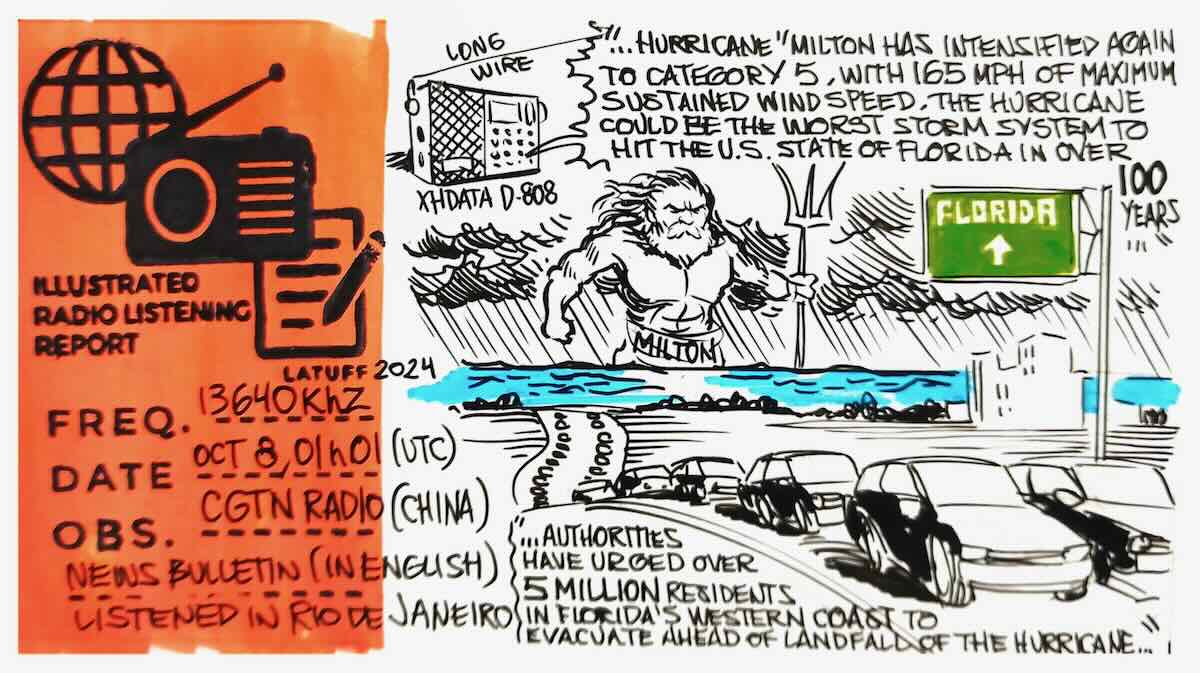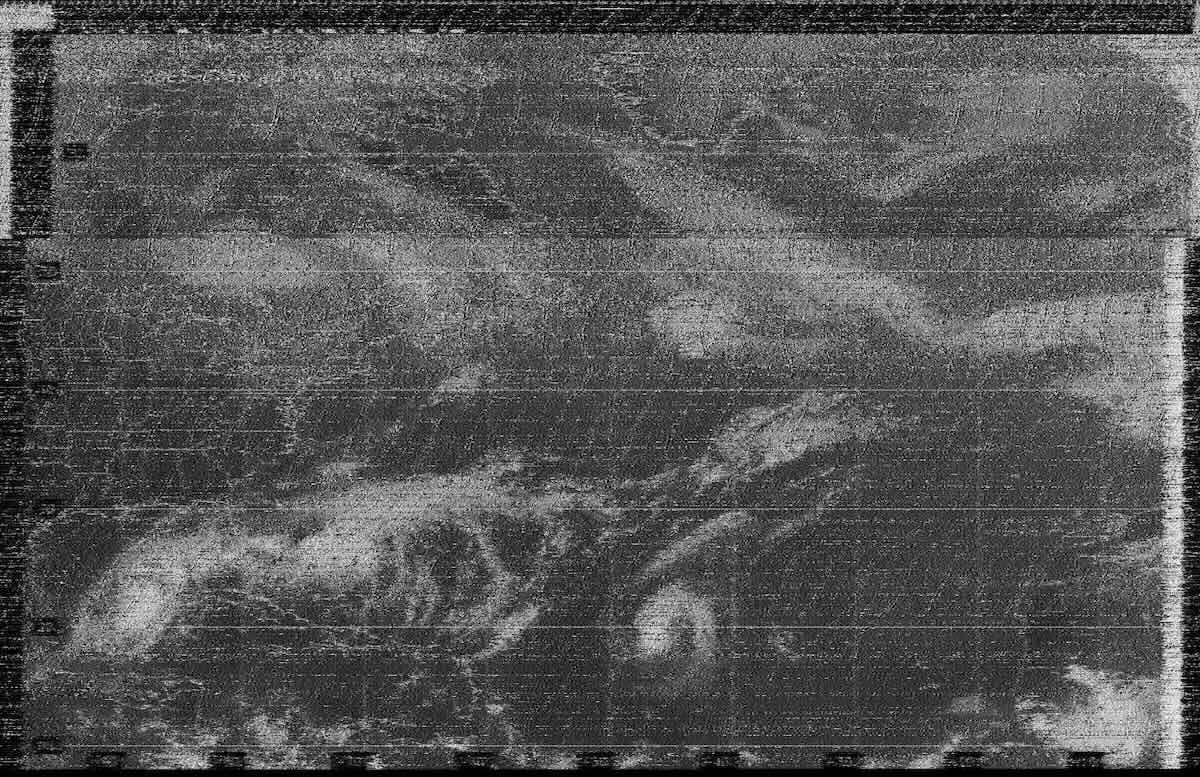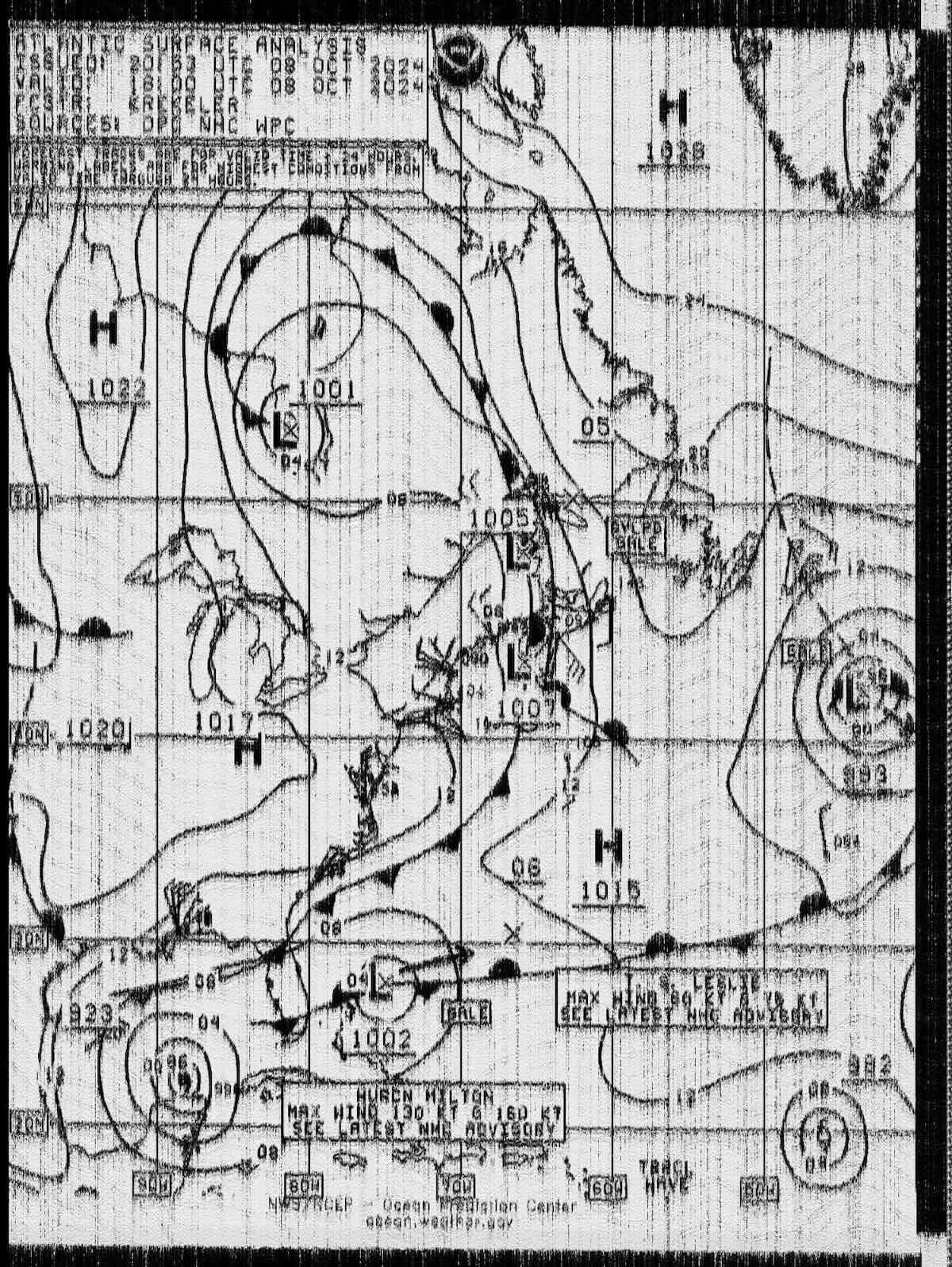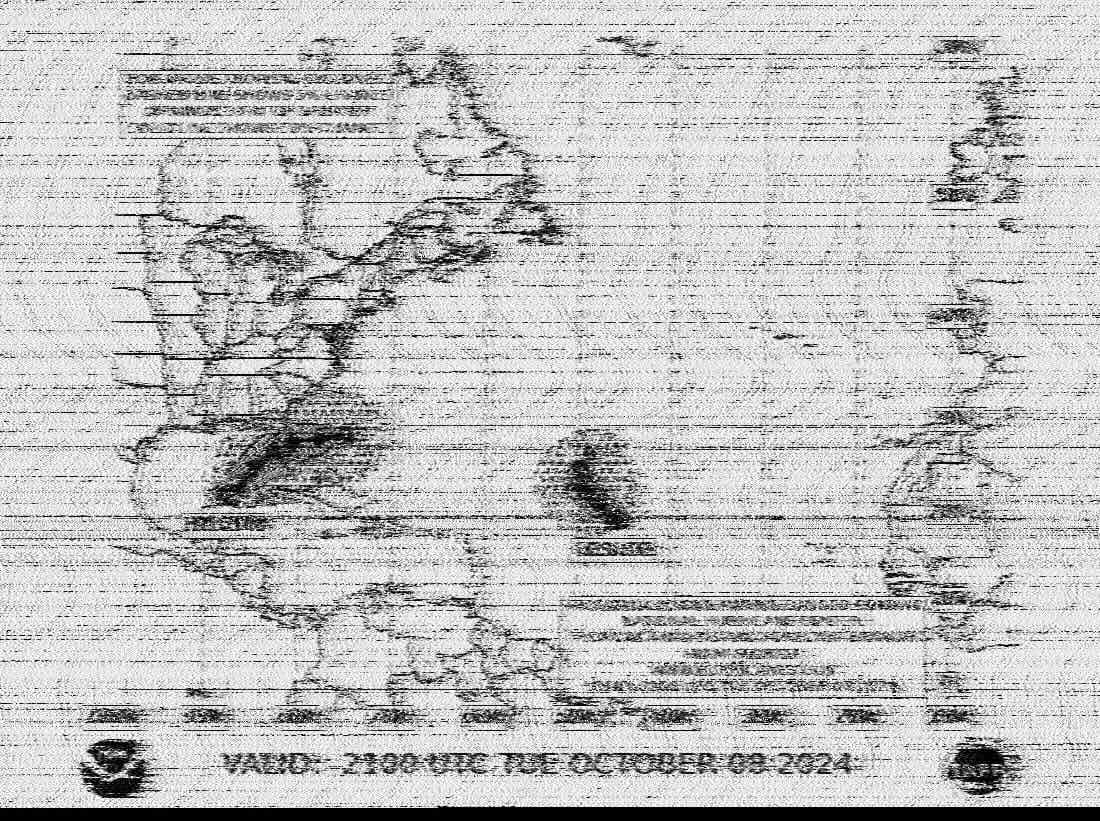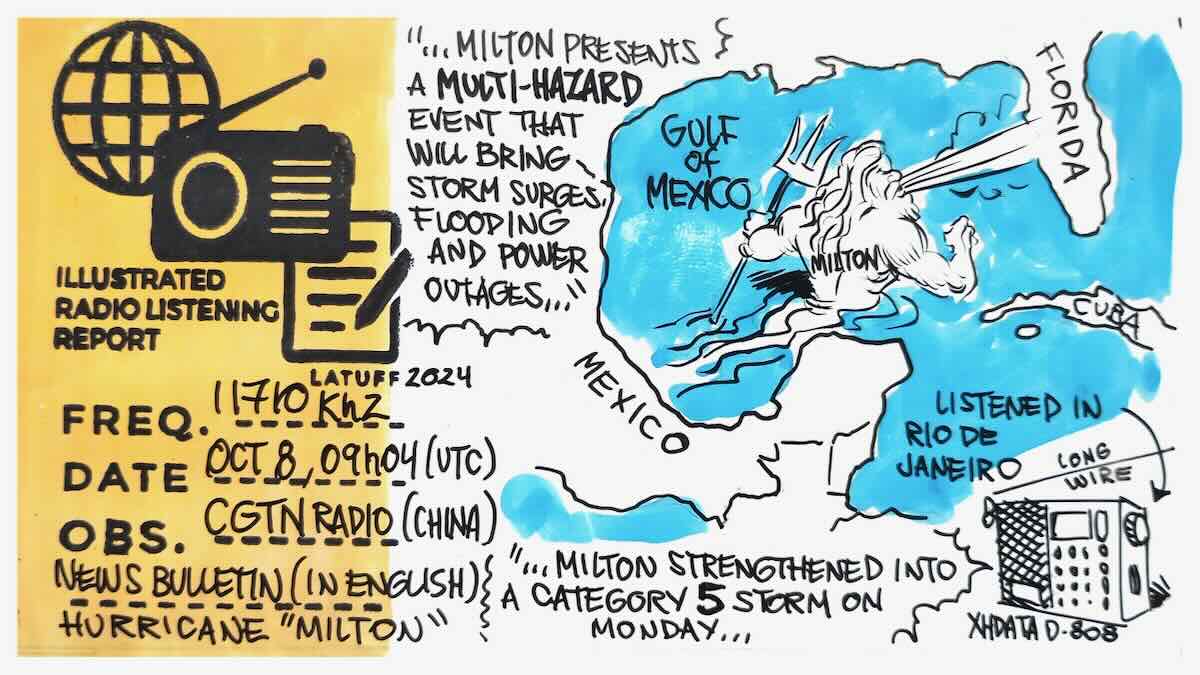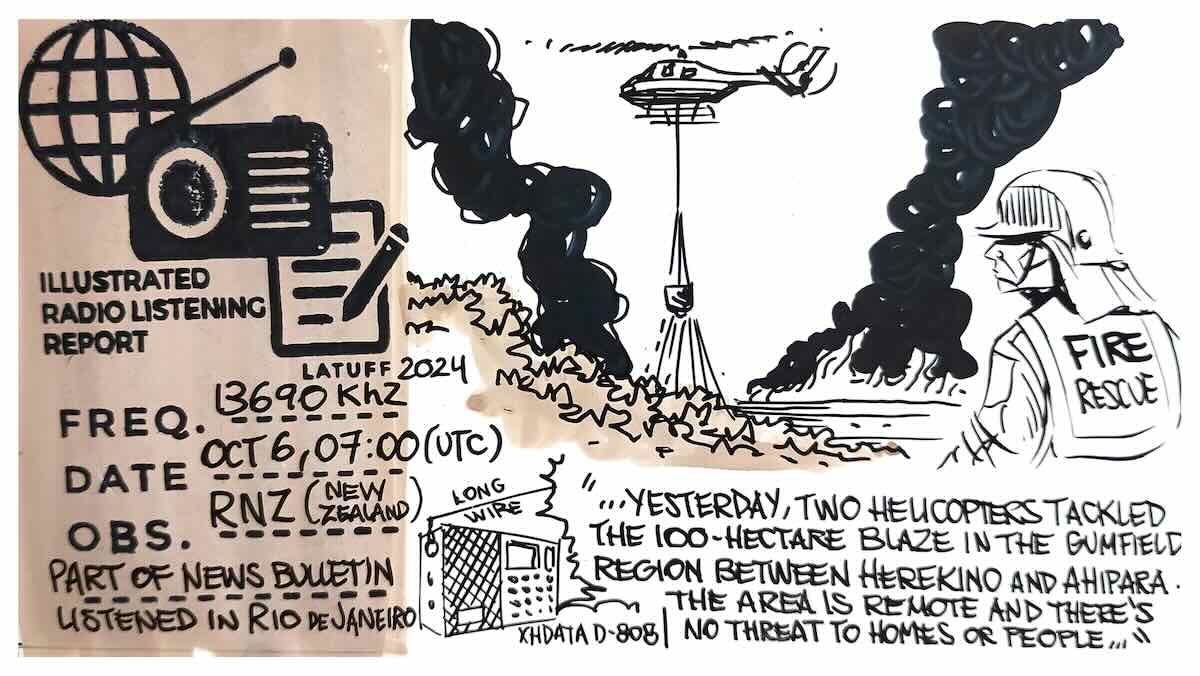Many thanks to SWLing Post contributor and noted political cartoonist, Carlos Latuff, who shares illustrated radio listening report of a recent VOK broadcast.
Carlos notes:
Part of Voice of Korea’s news bulletin (in Spanish): press statement of Kim Yo Jong, Vice Department Director of C.C., WPK. Listened at Urca Beach, Rio de Janeiro, Brazil.

